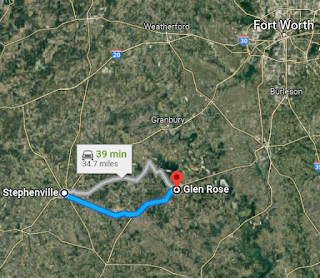 |
Esri map, from Esri, TomTom, Dept. of Commerce,
Census Bureau data
|
In 1968, Simon and Garfunkel released their song "America." Simon's lyrics wistfully recount his 5-day cross-country road trip longing for a way to explain America. The song is a pursuit of what it means to be American. But there are many ways to find America. . . .What about reading your way through American books to explain America? Susan Straight recounts her 5-year reading travels, "A map of 1,001 novels to show us where to find the real America," in her opinion for the Los Angeles Times.
"The idea for this 'library of America' was born in 2016, when the news and the elections told of a country being irrevocably divided by politics, by ideas of red and blue, by arguments over who is American and who is not. . . . For me, those arguments ignored the vast geography of our stories and novels, the ways people search for belonging, leave home or stay, and how every state is really many places. Those arguments also ignored our common dreams, fears, challenges, hopes and everyday experiences, which unite us, regardless of where we live. I wanted to show that the places of American fiction can’t be divided into blue or red states. . . .
I made 1,001 books my goal, just as Scheherazade in The Arabian Nights told many stories to stay alive. Maybe these books can keep us going as we read about the places we or our parents came from, regions we don’t know, homes lived in decades or centuries ago, or homes made last year by someone new. Driftless, the region of Wisconsin in David Rhodes’ work, is a timeless evocation of a remote place that led me west, where two books set hundreds of years apart in Montana — James Welch’s Fools Crow and Stephen Graham Jones’ The Only Good Indians—kept me awake all night. Rereading Willa Cather in Nebraska took me to Pickard County Atlas by Chris Harding Thornton, a beautiful echo of homelands. In my California, the Central Valley of Helena Maria Viramontes’ Under the Feet of Jesus leads into the L.A. of The Tattooed Soldier by Héctor Tobar and the Pala Reservation of Gordon Lee Johnson’s Bird Songs Don’t Lie.
Even fictional books have a home. "Working with the story maps team at Esri, I drew all over my paper map, seeing regions emerge in the novels for each state. We ended up with 11 regions, chosen for spines of mountain ranges, shared coastlines, and prairie expanses. To find exact locations to map for each novel, I found references in the books themselves; I read interviews with authors throughout decades of their writing, and often — my favorite way — I contacted them by email or through Instagram and asked where they felt the exact heart of their books might be — especially in fictional places."
All in all, Straight distilled America to 11 kingdoms. Here are some of her recommendations:
Pointed Firs, Granite Coves and Revolution
Vermont, Maine, New Hampshire, Massachusetts, Connecticut and Rhode Island
The stony coasts and harbors of Indigenous and pilgrim, heritage stories both dark and bright in rock-lined fields, cobblestone streets and onyx rivers, this region’s novels are classic, but I love the new voices as well. Every fall, I visit New Brunswick, the land of my stepfather, then drive south, seeing New England through these remarkable books.
Mountain Home and Hollows, Smokies and OzarksArkansas, Missouri, Tennessee, Kentucky, West Virginia and Pennsylvania
With a series of wooded spines, the swath of America dominated by ridges and valleys holds unique stories of resilience, isolation and family, secrets held for centuries and brave travels to save those loved and loyal to this place. This kind of home means deep reverence for tradition and yet great novels of children longing for new visions as well.
Blues and Bayous, Deltas and CoastsLouisiana, Mississippi, Alabama, Georgia and Florida
One of the richest legacies of fiction is here in eddies and waves, the desperate fields and dark roads to freedom, the tenacity of centuries and the swirl of change brought by bravery. In the South, the story is life, captured from the air into great literature.
In the Heart of the Heart of the CountryWisconsin, Michigan, Minnesota, Iowa, Illinois, Indiana and Ohio
I took this title from William Gass, whose rhythm repeats throughout this immense heartland, where I’ve been told secret histories that echo marvelous novels. I walk along cornfields where endless streams of blackbirds flow above, thinking that prairie turned to field, to town, to city, and yet the long-held heartaches and sly humor color this heartland.
High and Lonesome Songs: Prairies and MountainsMontana, North Dakota, South Dakota, Wyoming, Colorado and Nebraska
Yearly, I come here to hear stories from my long-gone grandmother’s people, secrets from Fraser mountains to desolate farmhouses in ghost towns like Purcell. These books immerse readers in centuries of beauty, movement and bone-hard work in this extraordinary place.
The essential geography of America in the books of my favorite contemporary writers is peopled by characters who speak Spanish, Tagalog, Vietnamese and more. They are filled with the vernaculars of place, where nothing is merely red or blue, solely political or always divided. This is, of course, true in life: Every neighborhood in America is a blending of stories that can’t be reduced to any single idea.


























